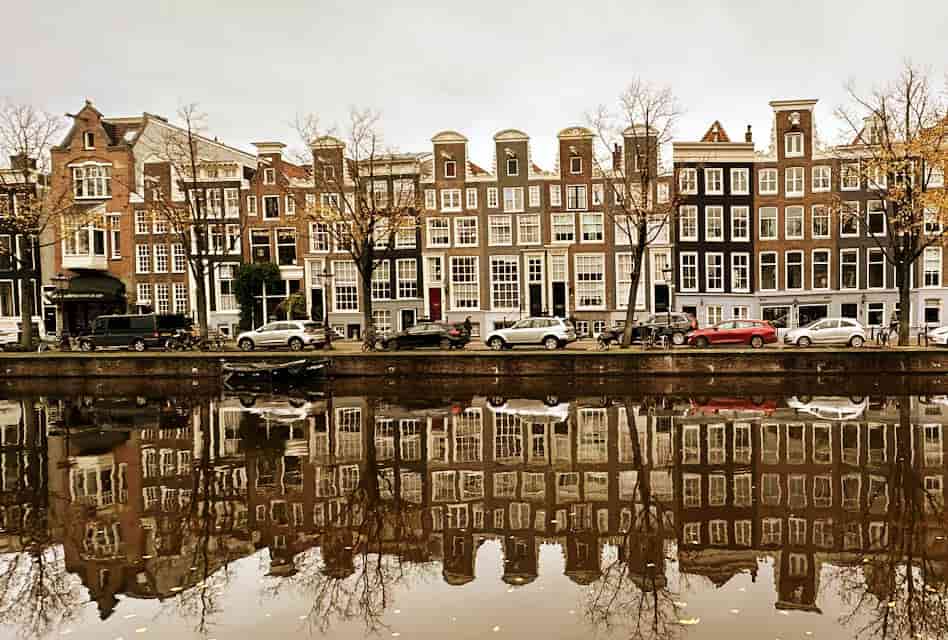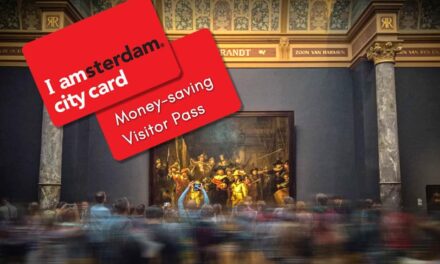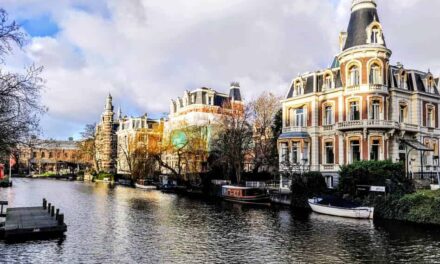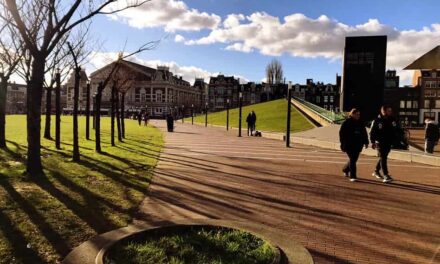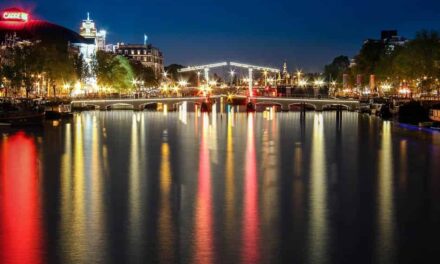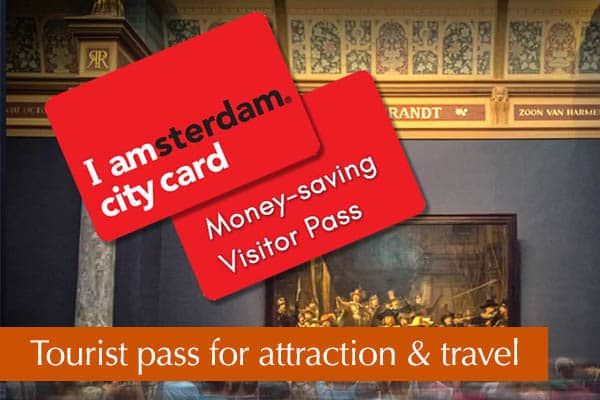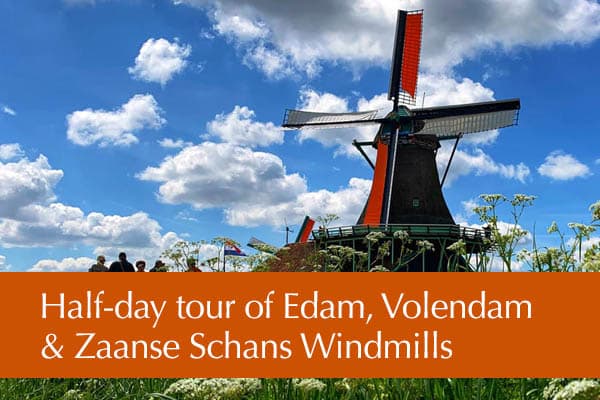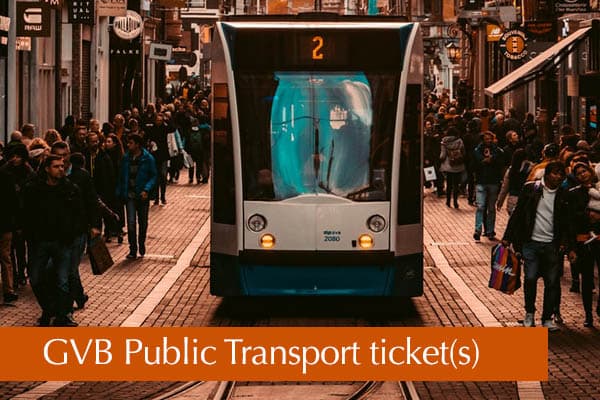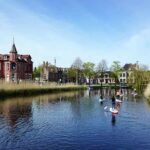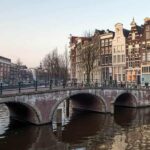Prinsengracht Canal
Prince’s Canal in Amsterdam
The Prinsengracht canal is one of the most iconic canals in Amsterdam. It’s the fourth and outermost of the main canals in the city. These four canals form rings around the historical city centre and give the area its canal belt name. The four canal rings are Singel, Herengracht, Keizersgracht and Prinsengracht.
The Prinsengracht Canal translates to “Prince’s Canal” in English, named after the Prince of Orange.
It is one of the most beautiful canals in Amsterdam, stunning canal houses grace its edges and it is home to one of Amsterdam’s must-see premier attractions, Anne Frank House.
Disclaimer: This post contains affiliate links to companies and services we trust. If you purchase something after clicking any link, then we will earn a small commission at no additional cost to you (policy page).
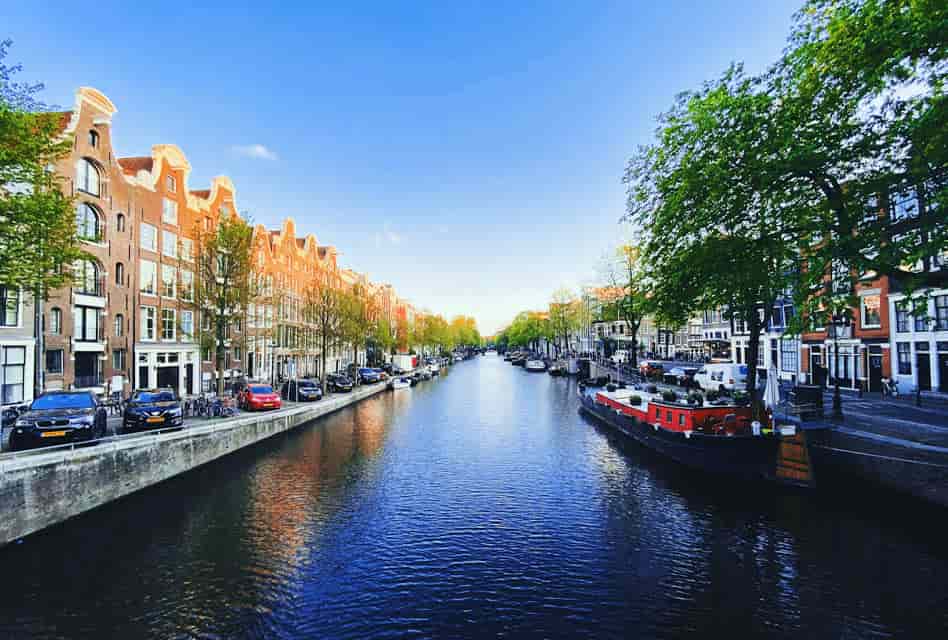
Prinsengracht Canal History
Construction of the Prinsengracht canal began in 1612, as part of a major urban expansion project during the Dutch Golden Age. It was designed to serve both residential and commercial purposes, creating trade and transportation within the city.
The Prinsengracht canal is the outermost ring of the Grachtengordel (Canal Belt/Canal District) and runs parallel to the Herengracht (Gentlemen’s Canal) and the Keizersgracht (Emperor’s Canal). The Singel Canal is the inner most canal. Prinsengracht canal stretches from the Brouwersgracht in the west to the Amstel river in the east.
Building the canal required extensive engineering efforts, including digging and dredging the original marshy terrain to create a navigable waterway. It was a monumental undertaking at the time, involving the labor of thousands of workers and the use of primitive tools and techniques.
Like the other canals in Amsterdam, the Prinsengracht canal was built to serve multiple purposes. It facilitated transportation of goods and people, provided access to warehouses and markets and even offered a means of defense against potential invaders.
The canal was named Prinsengracht, which translates to “Prince’s Canal” in English, in honor of William I, the Prince of Orange.
Over the centuries, the Prinsengracht canal has undergone various transformations, adapting to changes in Amsterdam’s economy, society, and urban planning. While it was once primarily a hub of commerce and industry, today it’s more known for its residential character and cultural significance.
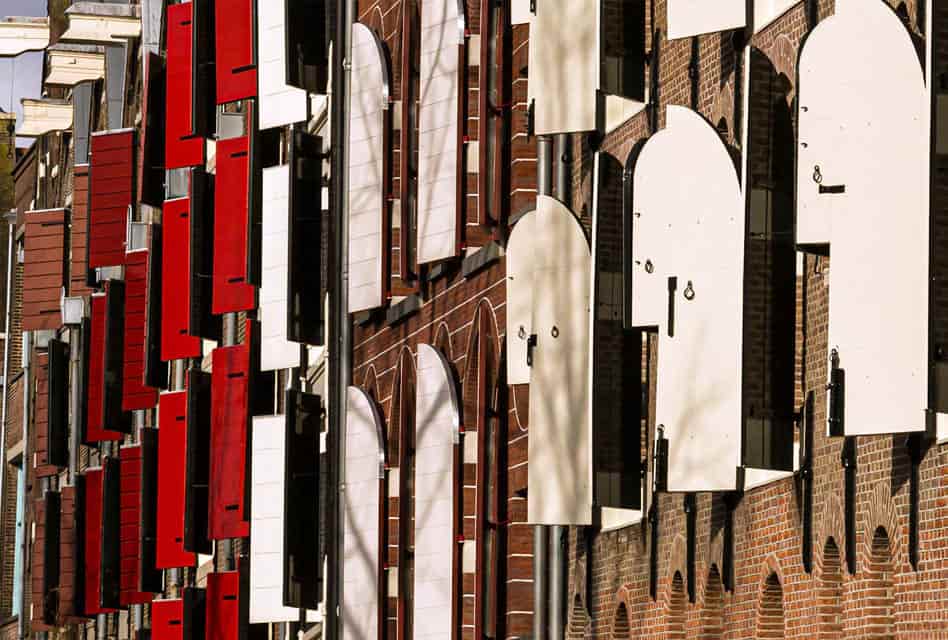
Prinsengracht Amsterdam is a very beautiful canal and area. Most visitors discover the canal when visiting Anne Frank House but it has so many charms that it should be on everyones list to visit and walk along.
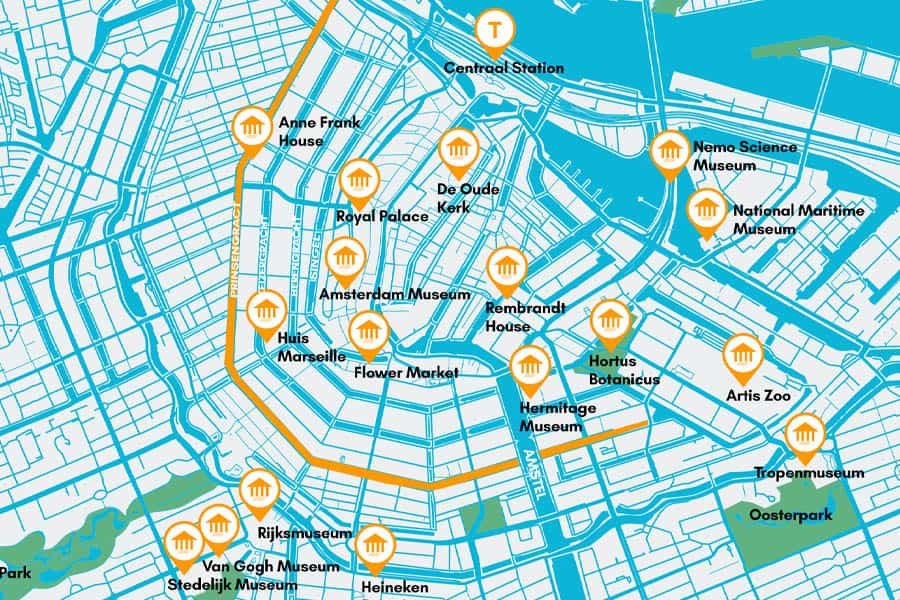
What is on the Prinsengracht Canal?
The Prinsengracht canal is home to an excellent variety of buildings and attractions. These range from historic merchant houses, beautiful canal house hotels and iconic landmarks.
Some of the notable buildings along the Prinsengracht include:
- Westerkerk (Western Church): One of Amsterdam’s most recognizable landmarks, the Westerkerk is a Protestant church located near the Anne Frank House. Its tall spire is a prominent feature along the Prinsengracht skyline.
- Anne Frank House: This moving museum is located at Prinsengracht 263, where Anne Frank and her family hid from Nazi persecution during World War II. The museum preserves the annex where the Frank family lived in hiding. It is on most peoples must visit lists.
- Noorderkerk (Northern Church): Situated near the intersection of the Prinsengracht and the Noordermarkt, this 17th-century Protestant church is known for its distinctive octagonal shape and elegant facade.
- Pulitzer Amsterdam: A luxury hotel housed in a collection of restored canal houses, the Pulitzer Amsterdam offers a unique blend of historic charm and contemporary elegance along the Prinsengracht.
- The Jordaan: The Prinsengracht runs through the Jordaan neighbourhood, known for its picturesque streets, quaint cafes and eclectic shops. Many of the buildings along this stretch of the canal date back to the 17th and 18th centuries.
- Merchant Houses: Throughout its length, the Prinsengracht is flanked by rows of historic merchant houses, characterised by their narrow facades, ornate gables and distinctive architectural features. You’ll know a merchant house when you see one. These houses once belonged to wealthy merchants and traders who played a key role in Amsterdam’s maritime trade.
- Various shops and culture: Along the Prinsengracht, you’ll find a real mix of shops, art galleries and venues that add to the vibrant and diverse character of the neighbourhood.
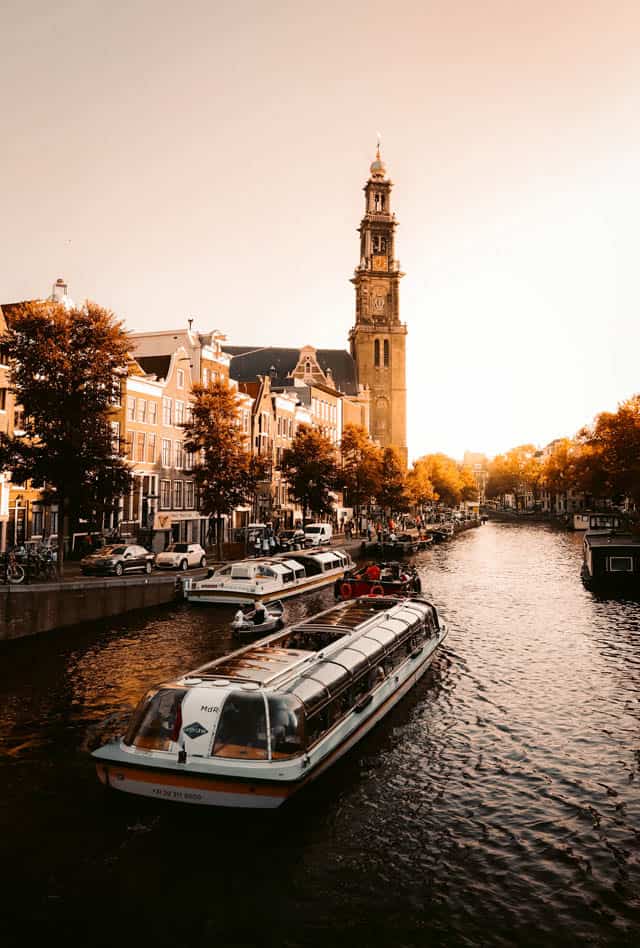
What to do on the Prinsengracht Canal
The Prinsengracht canal offers a variety of activities and attractions.
- Take a Canal Cruise: Explore Amsterdam’s waterways by taking a boat tour along the Prinsengracht Canal. Numerous tour companies offer guided canal cruises, providing a unique perspective of the city’s historic architecture and landmarks.
- Visit the Anne Frank House: Located at 263 Prinsengracht, the Anne Frank House is a must-visit attraction. Explore the museum to learn about Anne Frank’s life, her experiences in hiding during World War II and the legacy of her diary.
- Walk or Cycle Along the Canal: Enjoy a leisurely stroll or bike ride along the scenic Prinsengracht Canal. The tree-lined paths along the canal offer picturesque views of the water, historic buildings, and bustling neighborhoods.
- Explore the Jordaan District: Wander through the charming Jordaan neighbourhood, which borders the Prinsengracht Canal. Discover narrow streets and very narrow houses, cosy cafes, art galleries and boutique shops tucked away in historic canal houses.
- Attend the Prinsengracht Concert: If you’re visiting Amsterdam in August, don’t miss the annual Prinsengracht Concert. This open-air classical music concert takes place on a floating stage outside the Pulitzer Hotel on the Prinsengracht Canal. Thousands come to listen to the music in boats or along the quay. In 2024 it will be held on 24 August.
- Dine at Waterside Restaurants: Experience Amsterdam’s culinary scene at one of the many waterside restaurants and cafes along the Prinsengracht Canal. Enjoy a meal or drinks with a view of the canal and passing boats.
- Visit iconic churches and galleries: Explore cultural institutions and art galleries located near the Prinsengracht Canal, such as the Westerkerk, the Noorderkerk.
- Enjoy the water: During the warmer months, you can rent a paddleboard or kayak to explore the Prinsengracht Canal from the water. It’s a fun and active way to experience Amsterdam’s iconic waterways.
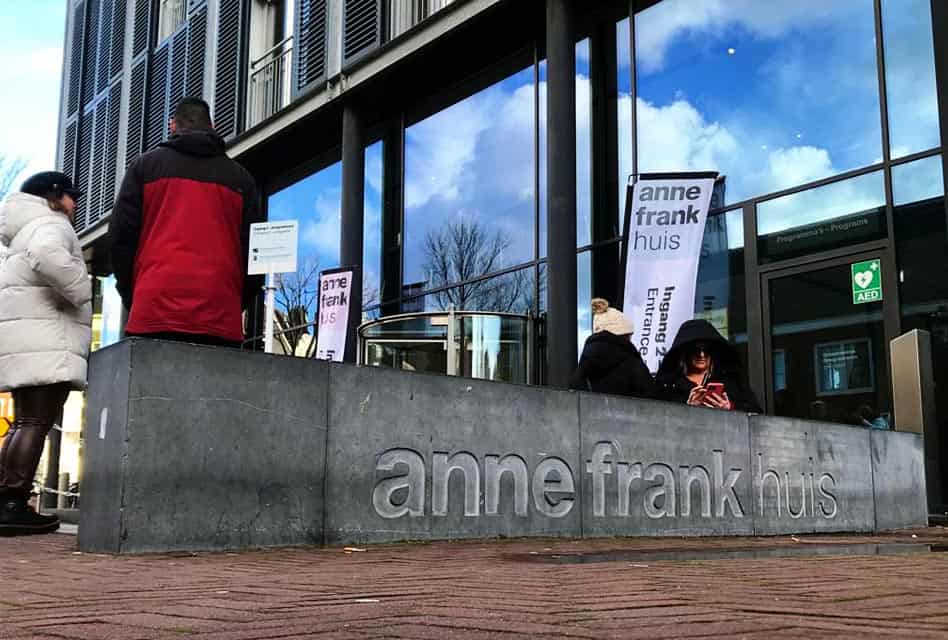
263 Prinsengracht
Perhaps the most well known Amsterdam address of all. 263 Prinsengracht was home to Anne Frank, the young Jewish girl who hid from the Nazi’s in the attic and wrote a diary of her experience during World War II. The diary is one of the world’s best known books and became of symbol of resistance and hope.
Anne Frank House is now a museum, within which you can see the attic in which Anne and her family hid for over two years. The museum explores her life and lives of those hiding from persecution and looks at the impact her diary has had on subsequent generations.
It is a moving experience and will live long in the memory, as it should.

